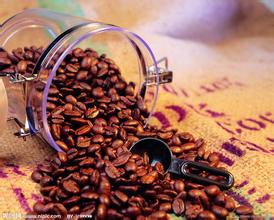Description of characteristic Flavor of Ugandan Coffee A brief introduction to the taste of Uganda Coffee produced by Grinding scale treatment
Description of characteristic Flavor of Ugandan Coffee A brief introduction to the taste of Uganda Coffee produced by Grinding scale treatment
The territory is located between the east and west branches of the East African Rift Valley, tilting gently from west to middle and low and flat in the south. Margarita Peak is 5109 meters above sea level, which is the highest peak in the country. There are many rivers and lakes and a large water area, so Uganda is known as "plateau water village" and "Pearl of East Africa". Lake Victoria is the second largest freshwater lake in the world and Africa, accounting for 43% of Uganda's territorial area. The White Nile (White Nile), which flows from Lake Victoria, flows through most of the country. Its unique scenery includes tropical forests and tea trees on the snow-covered slopes of Mount Ruwenzori Mountains, dry plants in Karamoja, rolling savannas in Acholi, Bunyoro, Tororo and Ankole, and fertile cotton fields in Teso. Tropical climate. Because of the high terrain, most areas are warm all the year round. The average annual rainfall is 1 000 mm. Agriculture is the main pillar of the country's economy. The population of agriculture and animal husbandry accounts for 90% of the country. Crops include plantains, cassava, millet, sorghum, corn and so on.
According to statistics released by the International Coffee Organization (International Coffee organization), Uganda has exported 1.6 million bags of coffee in the past six months, surpassing Ethiopia, the largest coffee producer in Africa, and ranking first in African coffee exports.
Uganda needs to further increase coffee production in order to maintain its position as Africa's largest coffee exporter, according to the Uganda Coffee Development Authority. Uganda's coffee production is expected to reach 14.47 million bags in 2013, an increase of 270000 bags over 2012
The cultivation of coffee in Uganda is all small-scale family operation. The livelihood of 25% of the population is closely related to coffee production. About 500000 farms grow coffee, but mainly Robster. Robusta accounts for 90% of coffee production, and the remaining 1 is Arabica coffee. The collection time for Arabica and Robusta is from October to February.
Fresh coffee (Fresh Coffee Only): refers to freshly roasted coffee beans, only fresh coffee will have quality! Charming and exciting aroma, usually with pure beans as raw materials, freshly baked! Santos, Brazil; Colombian excellent or mixed grade; Ethiopia "Harald"; Sumatra Mantenin, Kenya; and mixed Italian coffee beans ESPRESSO, these are relatively good daily coffee! The quality and taste are quite right! If the shopkeeper is not honest and add some Yunnan beans, it is a little less mellow.

Important Notice :
前街咖啡 FrontStreet Coffee has moved to new addredd:
FrontStreet Coffee Address: 315,Donghua East Road,GuangZhou
Tel:020 38364473
- Prev

How to make deep-baked coffee powder-description of how Arabica coffee is cooked
In Arab countries, if a person is invited to someone else's house for coffee, it shows the most sincere respect of the host, and the invited guests should express their heartfelt gratitude and response. When guests come to the host's house, they should be courteous and courteous. When tasting coffee, they should not only praise the coffee.
- Next

Changes of roasting degree and flavor shape of coffee beans
The change of roasting degree and flavor shape of coffee beans can aptly express the feeling that I have explored in the field of coffee roasting: "the blind touch the elephant". Once upon a time, I thought I had touched a specific shape, but it turned out to be nothing more than an elephant trunk. After a period of time, you may find that it is not all of the elephant trunk, but only a small part. The deeper you explore, the more you discover yourself.
Related
- Beginners will see the "Coffee pull flower" guide!
- What is the difference between ice blog purified milk and ordinary milk coffee?
- Why is the Philippines the largest producer of crops in Liberia?
- For coffee extraction, should the fine powder be retained?
- How does extracted espresso fill pressed powder? How much strength does it take to press the powder?
- How to make jasmine cold extract coffee? Is the jasmine + latte good?
- Will this little toy really make the coffee taste better? How does Lily Drip affect coffee extraction?
- Will the action of slapping the filter cup also affect coffee extraction?
- What's the difference between powder-to-water ratio and powder-to-liquid ratio?
- What is the Ethiopian local species? What does it have to do with Heirloom native species?

